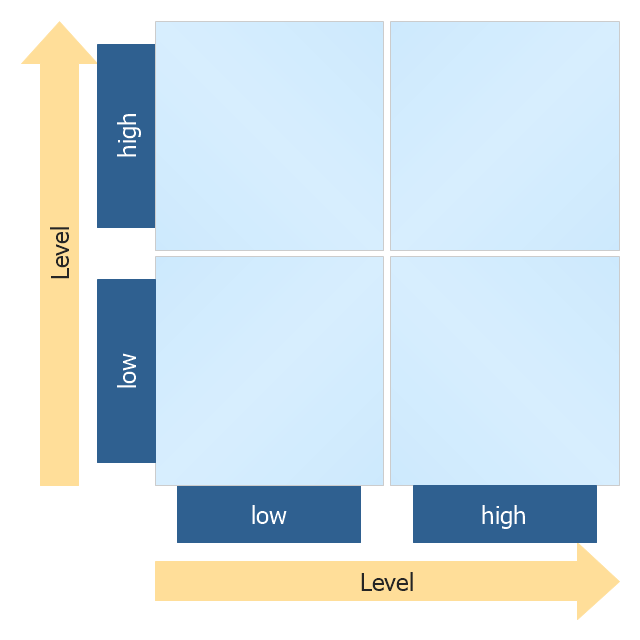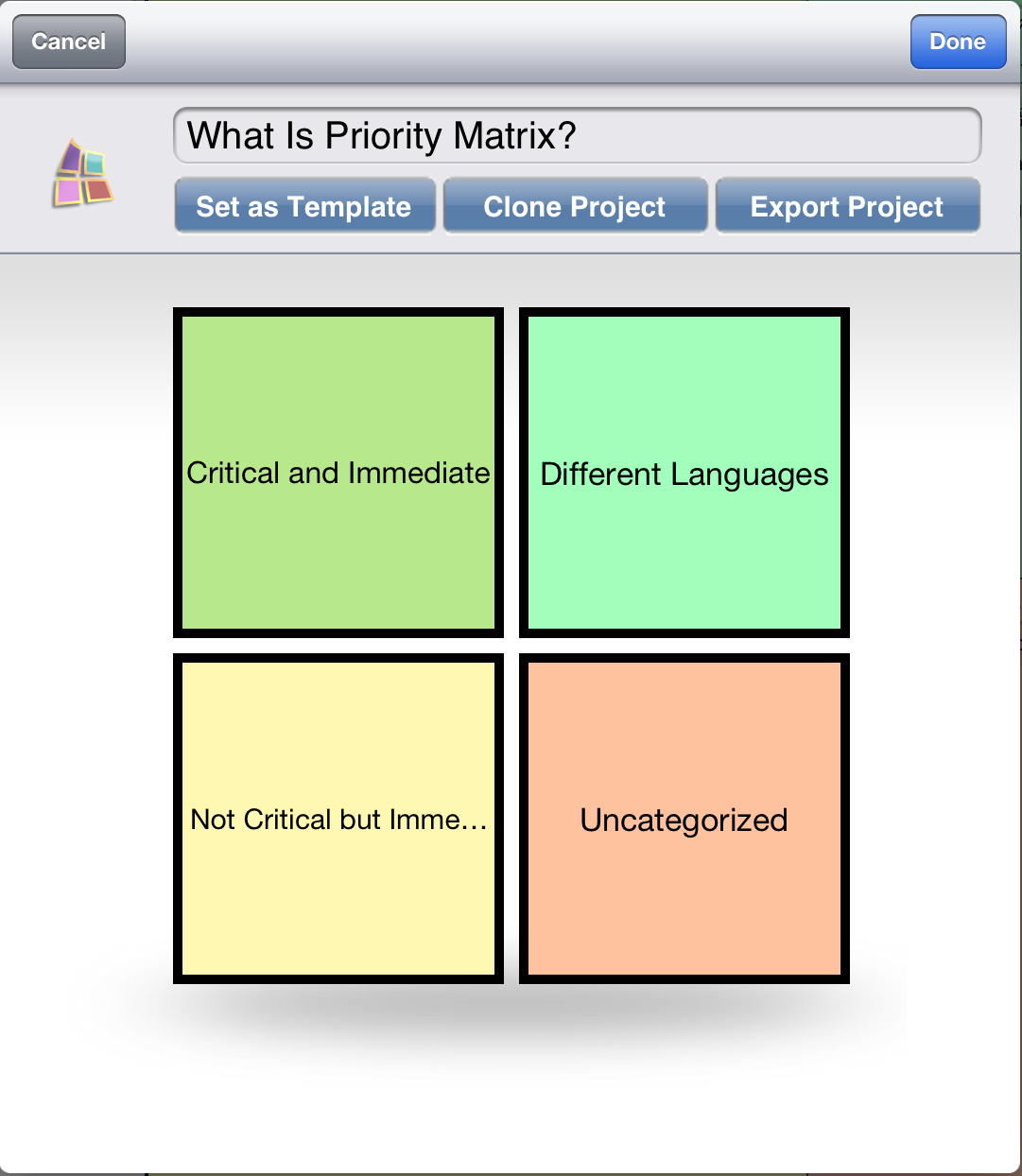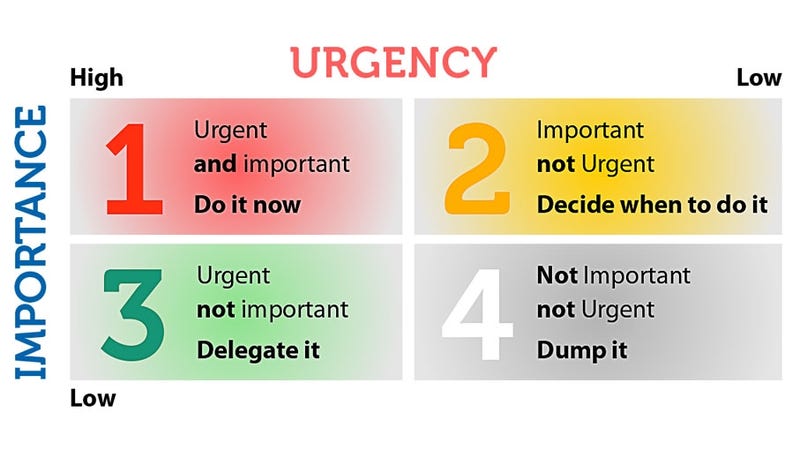

List down all action items on your radar including current projects, goals, and other priorities.
PRIORITY MATRIX QUADRANTS HOW TO
With any task management tool, it is important to know how to best use it to maximize the effectiveness and overall impact of the priority matrix.įollow these steps to use your matrix priority accordingly: Once you understand the general principles of the priority matrix, you will be able to put them into action or apply them in real life. You can opt to do these things at a later time or decline them altogether. Known as Thankless Tasks, these are projects that you should avoid adding to your schedule as they make distract you from high-value work.

You can even decline these if you need to channel your energy on other things. You can opt to have them delegated in order for you to focus on more important matters or if something better comes along.
PRIORITY MATRIX QUADRANTS FREE
These are tasks that you should do if you have free time. In order to accomplish all items classified under this quadrant, it is recommended to set deadlines and build checkpoints into your schedule throughout the project. Quadrant 2 (High Impact, High Effort)Īlso known as major projects, these tasks and projects have good returns, but they require a lot of time and effort. It is recommended to do these tasks first. They’re the most attractive projects as they promise good returns for little effort. Otherwise known as quick wins, these are the tasks or items classified as high impact and low effort. Overall, the priority matrix helps one see the bigger picture and in turn, helps channel focus on important things.

These are then classified under four quadrants. Basically, the priority matrix breaks out tasks or items into two dimensions: urgency and importance, and impact, and effort. Breaking Down the Priority Matrixīefore you start on working your own priority matrix, it is important you understand its underlying principles. Whereas the Eisenhower method can be utilized by anyone to manage time and priorities better, the priority matrix is geared toward business leaders in order to keep track of their team’s productivity levels. What sets the priority matrix apart from the Eisenhower method is that priority matrix project management targets operations and project managers who are in charge of large initiatives and teams, and that they are tasked to make schedules more efficient in order to maximize the return of investment. Unimportant/ not urgent tasks are dropped.Unimportant/ urgent tasks are delegated.Important/ not urgent tasks are done personally and with an end date or deadline.Important/urgent tasks are done personally and immediately.The system of Eisenhower works on this principle: tasks are prioritized according to two criteria, important/unimportant and urgent/not urgent. Yes, this system was devised by President Dwight Eisenhower. The Priority Matrix is a model based on the Eisenhower method of arranging tasks according to importance and urgency in a 2×2 matrix. How much time will you have to allocate for a certain project? What is the scope of work? How much will it cost you in terms of effort spent and actual money or other resources involved? These are some of the things you need to consider in order to see the bigger picture using the priority matrix and learn which items are critical and which ones you can set aside. Three factors are critical in using the priority matrix: cost, scope, and time. It is a structured approach to working on what matters most or in short, prioritization, based on the level of importance and effort.
PRIORITY MATRIX QUADRANTS SOFTWARE
The Priority Matrix is a time management system or software that is supported on a number of platforms. One of the best tested and proven tools on the market today is the priority matrix.

One effective way of maximizing your opportunities and proper prioritization is through having a tool to help weigh factors and determine which task to put first. So how do you prioritize anyway? Prioritization depends on a number of factors: importance, time sensitivity, costs (monetary or energetic), subsequence to a succeeding task, and more. No matter how big or small a task is, you need to be able to sort out your priorities so you don’t get overwhelmed, and so you can work on every important project well and on time. Prioritization is important not just in work, but in life in general. Whatever endeavor you plan to succeed in, you need to be able to manage your workload well, and that entails knowing your priorities. Talking the talk is easy, but walking the talk can be challenging.


 0 kommentar(er)
0 kommentar(er)
